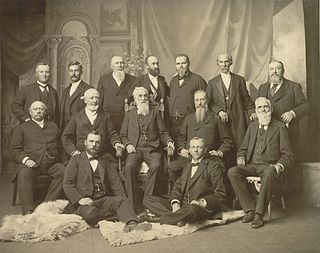
In the Church of Jesus Christ of Latter-day Saints, the Quorum of the Twelve Apostles is one of the governing bodies in the church hierarchy. Members of the Quorum of the Twelve Apostles are apostles, with the calling to be prophets, seers, and revelators, evangelical ambassadors, and special witnesses of Jesus Christ.

The Aaronic priesthood is the lesser of the two orders of priesthood recognized in the Latter Day Saint movement. The others are the Melchizedek priesthood and the rarely recognized Patriarchal priesthood. Unlike the Melchizedek priesthood, which is modeled after the authority of Jesus and the Twelve Apostles, or the Patriarchal priesthood, which is modeled after the authority of Abraham, the Aaronic priesthood is modeled after the priesthood of Aaron the Levite, the first high priest of the Hebrews, and his descendants. The Aaronic priesthood is thought to be a lesser or preparatory priesthood and an "appendage" of the more powerful Melchizedek priesthood.

The Relief Society is a philanthropic and educational women's organization of the Church of Jesus Christ of Latter-day Saints. It was founded in 1842 in Nauvoo, Illinois, United States, and has more than 7 million members in over 188 countries and territories. The Relief Society is often referred to by the church and others as "one of the oldest and largest women's organizations in the world."
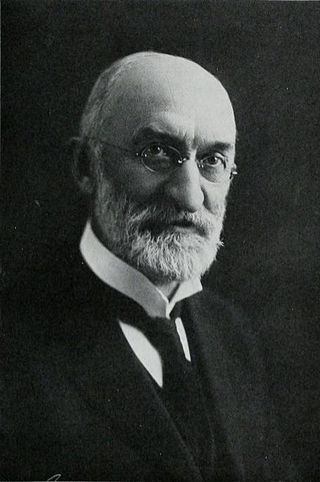
Heber Jeddy Grant was an American religious leader who served as the seventh president of the Church of Jesus Christ of Latter-day Saints. Grant worked as a bookkeeper and a cashier, then was called to be an LDS apostle on October 16, 1882, at age 25. After the death of Joseph F. Smith in late 1918, Grant served as LDS Church president until his death.
A ward is a local congregation in the Church of Jesus Christ of Latter-day Saints --with a smaller local congregation known as a branch.

Lorenzo Snow was an American religious leader who served as the fifth president of the Church of Jesus Christ of Latter-day Saints from 1898 until his death. Snow was the last president of the LDS Church in the 19th century and the first in the 20th.
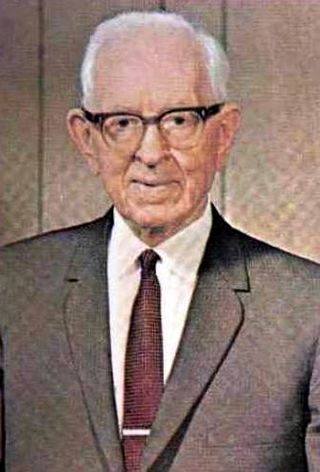
Joseph Fielding Smith Jr. was an American religious leader and writer who served as the tenth president of the Church of Jesus Christ of Latter-day Saints from 1970 until his death in 1972. He was the son of former church president Joseph F. Smith and the great-nephew of Church founder Joseph Smith.
In the Church of Jesus Christ of Latter-day Saints, the Priesthood Correlation Program began in 1908 as a program to reform the instruction manuals and curriculum of the different organizations of the church. Its scope quickly widened and Correlation came to have large effects on almost every aspect of the church including doctrines, organizations, finances, and ordinances. A significant consequence was to centralize decision making power in the priesthood, particularly the Quorum of the 12 Apostles. More recently, the function of the correlation department has shifted to planning and approving church publications and curriculum and keeping unorthodox information, doctrines and other undesired concepts from being introduced or revived.

David Oman McKay was an American religious leader and educator who served as the ninth president of the Church of Jesus Christ of Latter-day Saints from 1951 until his death in 1970. Ordained an apostle and member of the Quorum of the Twelve Apostles in 1906, McKay was an active general authority for nearly 64 years, longer than anyone else in LDS Church history.
This is a timeline of major events in Mormonism in the 20th century.
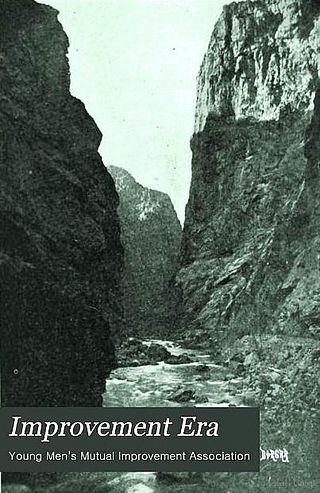
The Improvement Era was an official magazine of the Church of Jesus Christ of Latter-day Saints between 1897 and 1970.
In the Latter Day Saint movement, the Quorum of the Twelve is one of the governing bodies of the church hierarchy organized by the movement's founder Joseph Smith and patterned after the Apostles of Jesus. Members are called Apostles, with a special calling to be evangelistic ambassadors to the world.
Setting apart is a ritual or priesthood action in the Church of Jesus Christ of Latter-day Saints where a person is formally blessed to carry out a specific calling or responsibility in the church.
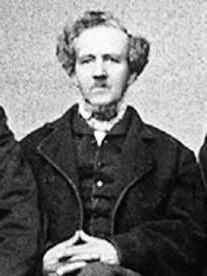
Phineas Howe Young was a prominent early convert in the Latter Day Saint movement and was later a Mormon pioneer and a missionary for the Church of Jesus Christ of Latter-day Saints. Phineas Young was an older brother of Brigham Young, who was the president of the LDS Church and the first governor of the Territory of Utah.
Warner "William" McCary was an African American convert to Mormonism who was excommunicated from the Church of Jesus Christ of Latter-day Saints in 1847 for claiming to be a prophet. Some researchers have suggested that McCary's actions led to the Church's subsequent policy of not allowing people of black African descent to hold the priesthood or participate in temple ordinances.
June Conference was an annual gathering of the Church of Jesus Christ of Latter-day Saints for young men and women, as well as church leaders. It was held in Salt Lake City between 1888 and 1975, and included cultural festivals, training, and speeches by church leaders.

Since Mormonism’s foundation, Black people have been members, however the church placed restrictions on proselytization efforts among black people. Before 1978, black membership was small. It has since grown, and in 1997, there were approximately 500,000 black members of the church, mostly in Africa, Brazil and the Caribbean. Black membership has continued to grow substantially, especially in West Africa, where two temples have been built. By 2018, an estimated 6% of members were black worldwide. In the United States, approximately 1% of members are black.

The following outline is provided as an overview of and a topical guide to the Church of Jesus Christ of Latter-day Saints.










